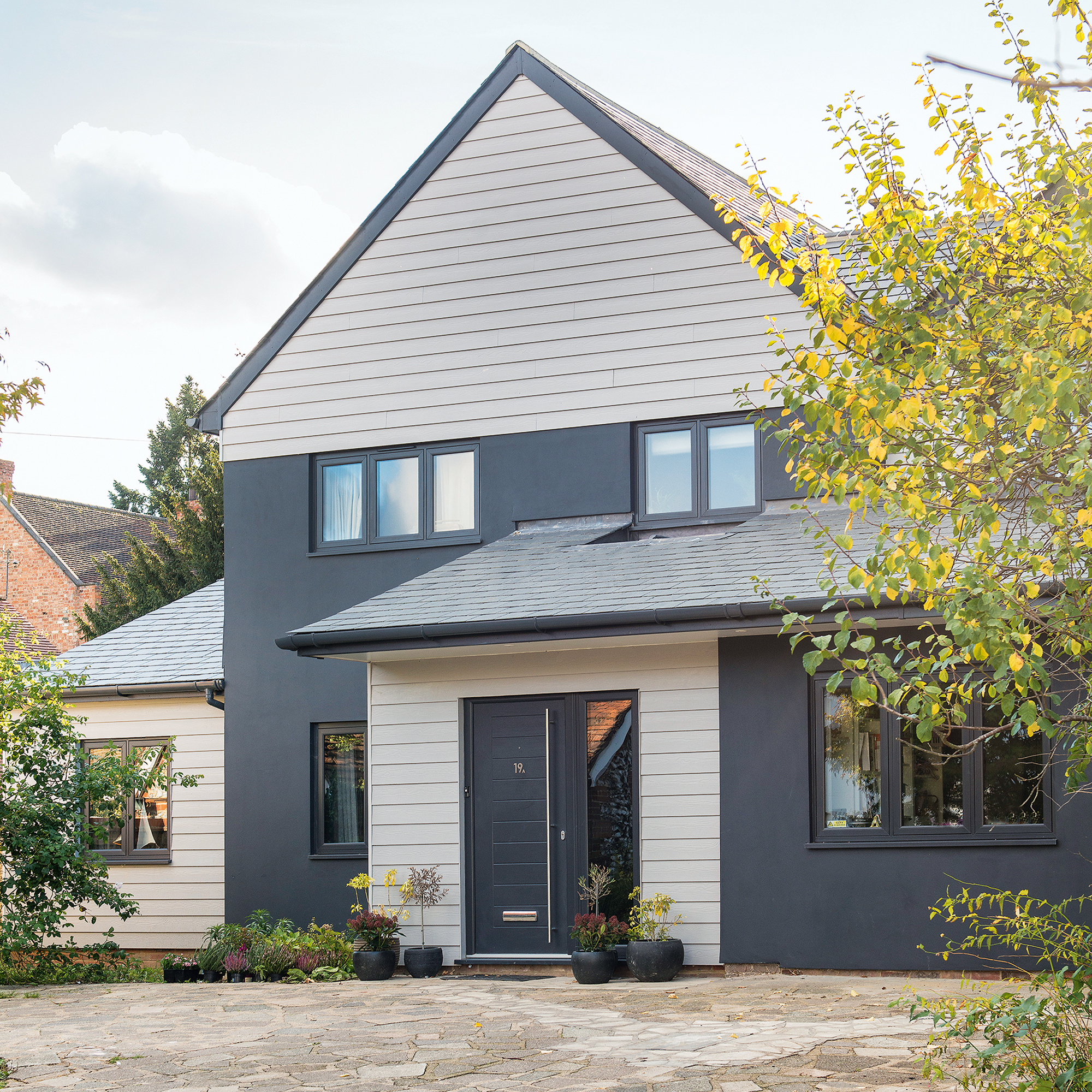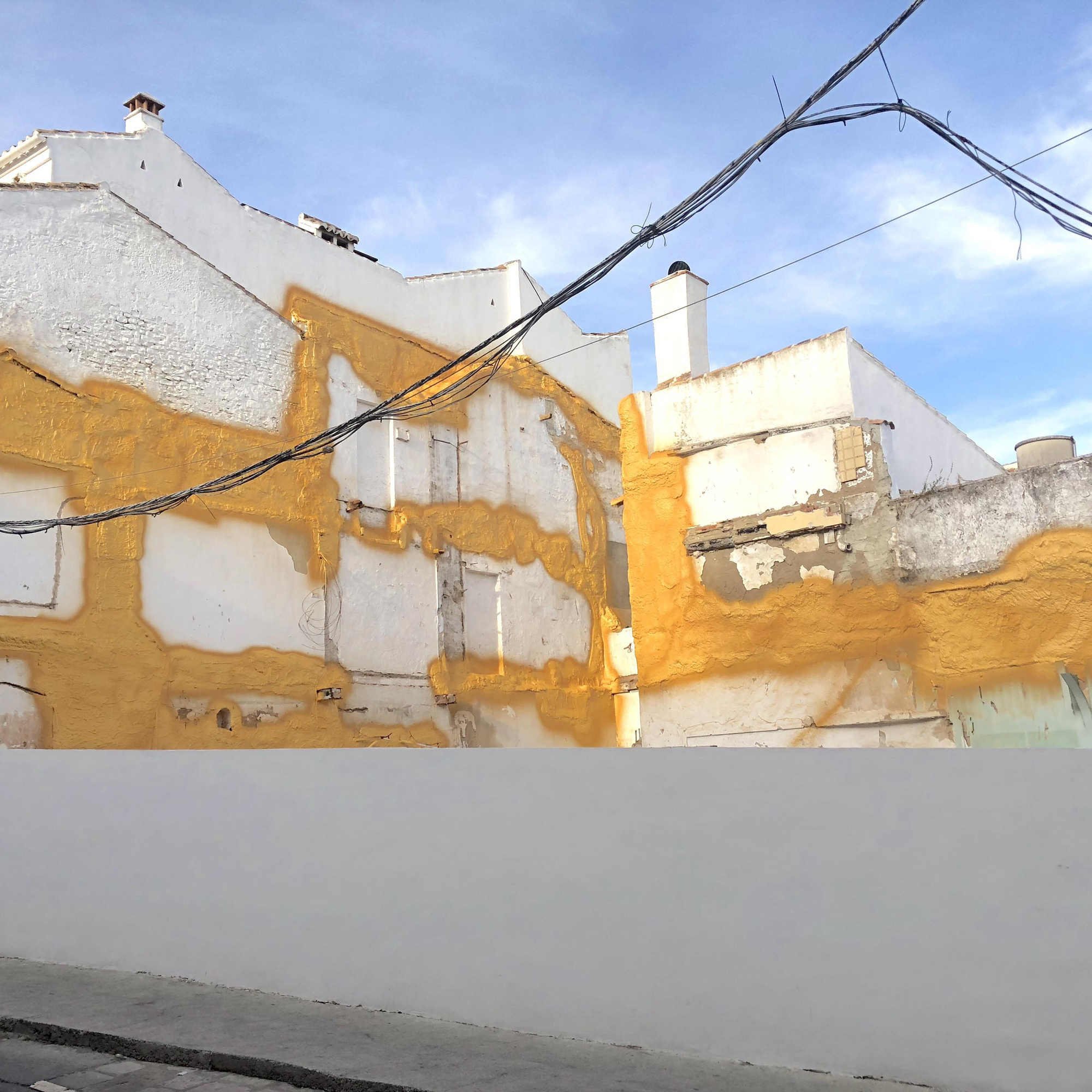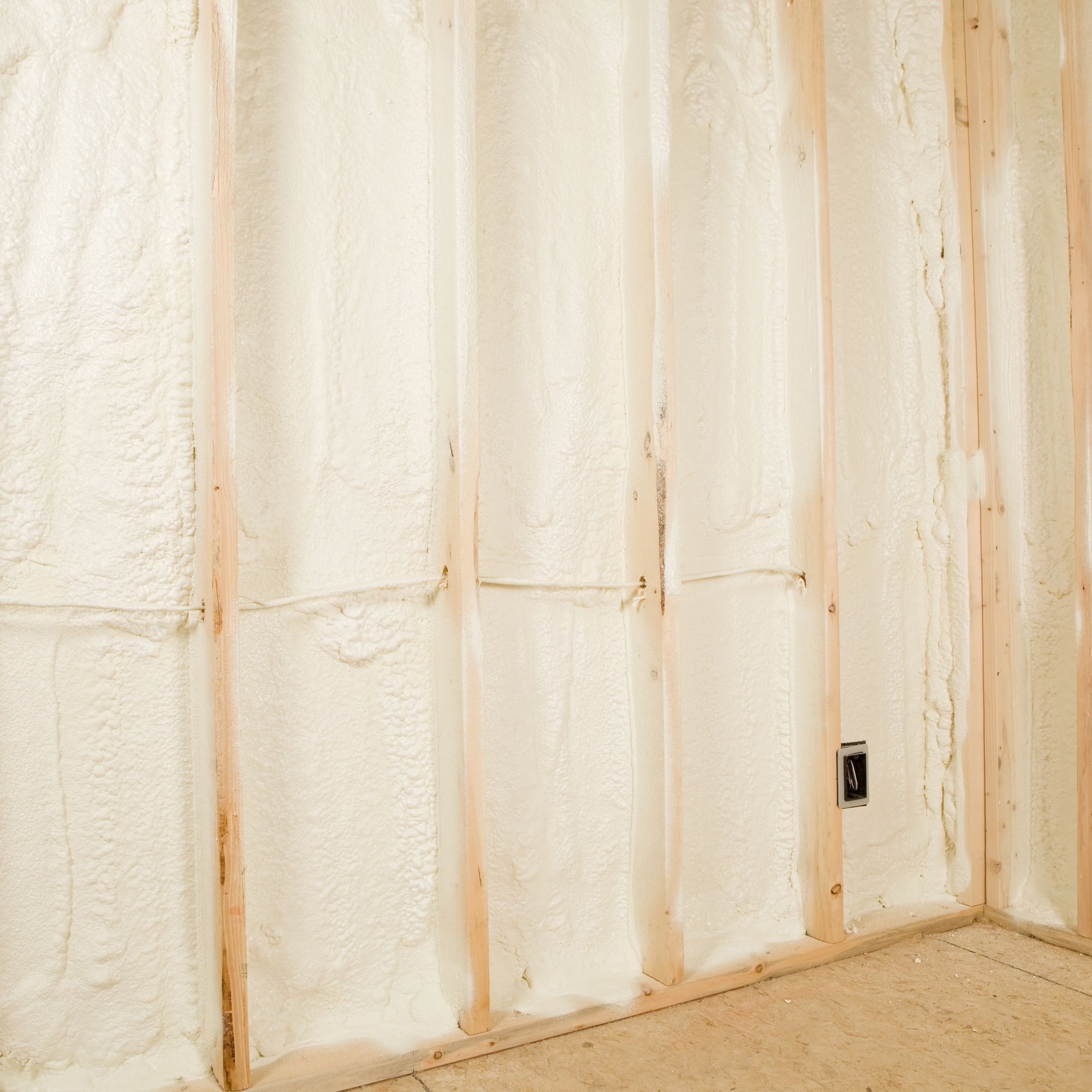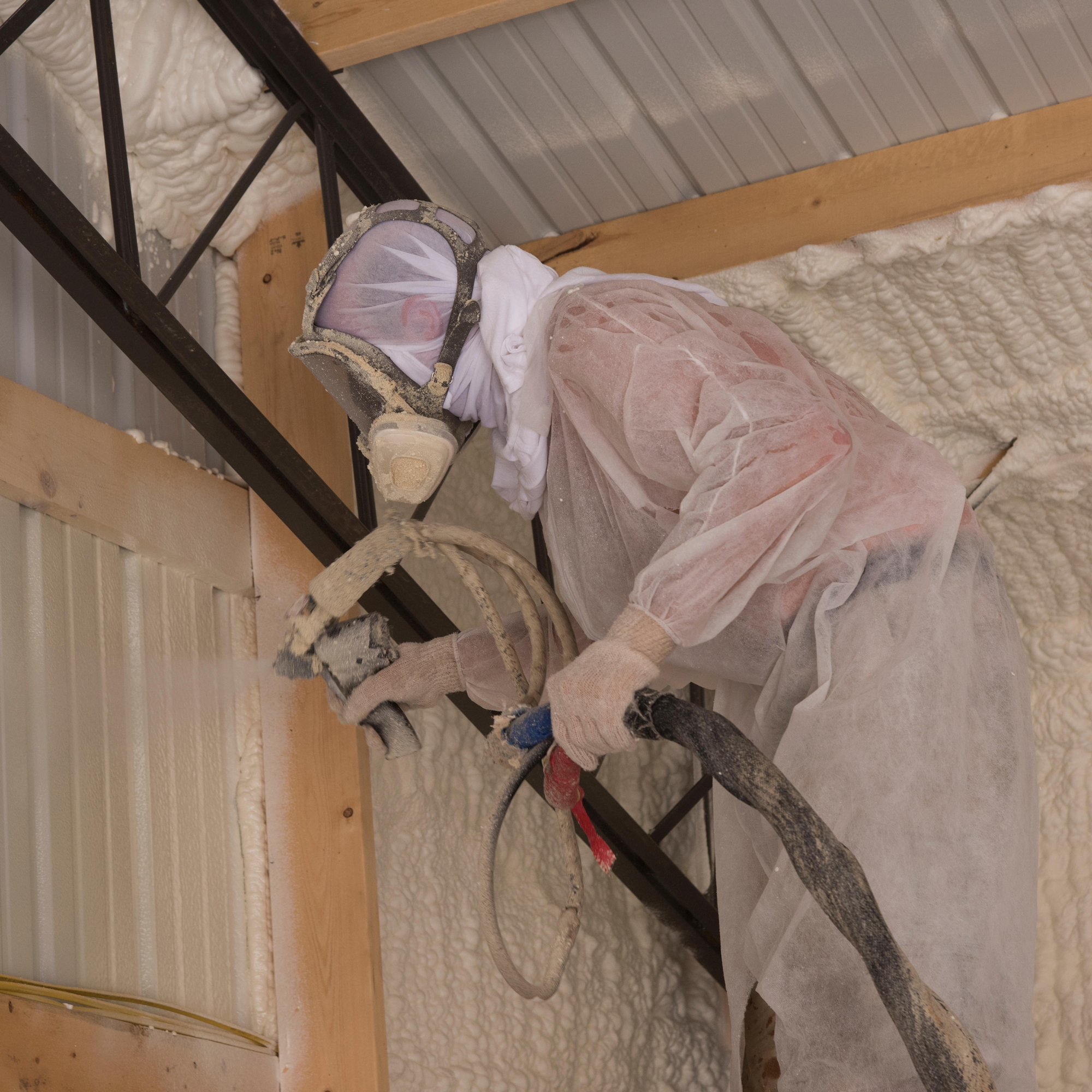Spray foam insulation – everything you need to know about costs and installation
Discover the benefits of spray foam insulation, the different types available and installation tips and costs


It's more important than ever to ensure that your home isn’t losing precious heat via leaky building fabric with energy prices skyrocketing. And spray foam insulation can be a brilliant option.
One of the best ways to insulate your home, spray foam insulation, also known as spray polyurethane foam (SPF), provides an alternative to more conventional methods, such as rigid boarding or blanket systems. In the right scenario, spray foam solutions can provide an effective barrier to prevent heat from escaping your house.
'The biggest impact on energy bills is almost always insulation,' says Dr Sarah Price, technical director at QODA Consulting, an efficient building solutions specialist. According to the Energy Saving Trust, incorporating insulation could save you around £250 per year on bills.
Applied in liquid form, the spray foam self-adheres to any building or structure before expanding to the required thickness. From there, it hardens to establish a seamless, rigid structure. The continuous membrane of the insulation sticks to awkward corners and shapes, providing an unbroken barrier that prevents warmth from escaping. It’s a highly versatile solution that can be used in your walls, and floors as well as for roof and loft insulation.
Spray foam insulation – everything you need to know
Want to find out more? Here, we take a closer look at the unique benefits of spray foam insulation, installation tips, costs and how to find your supplier.
What are the benefits of spray foam insulation?

When correctly installed, spray foam insulation (SFI) provides a continuous airtight envelope with no joints or cracks that heat can escape through. This, of course, has the potential to dramatically reduce your utility bills.
'This type of insulation will also help keep your house at a comfortable and consistent temperature, resulting in a reduced carbon footprint due to using less energy to heat the property,' says Jenny Turner from Insulation Express.
As the foam is sprayed, it can be directed into all the awkward nooks and crannies that other solutions may not be able to reach. Plus, installation is speedy when the job is carried out by an experienced professional. In some cases, spray foam insulation can provide additional sound proofing, too, which makes it a popular choice for homes near busy roads.
'Spray foam insulation is also a long-lasting option, with an average lifespan of around 80 years,' says Jenny Turner. 'It can also improve overall air quality by reducing indoor allergens, such as dust and mould. This is because it deters moisture from accumulating by retaining its insulating qualities even when it gets wet.'
When subjected to wet conditions, some other insulating materials such as mineral wool are more prone to sagging and losing shape, which has the potential to reduce their efficiency.
What types of spray foam insulation are there?
Spray foam insulation can be broken down into two categories: closed cell and open cell. Both are formed from polyurethane and filled with air bubbles but have different properties once the foam has set.
Closed cell: These solutions set to form a rigid layer that doesn't allow air or moisture to pass through. When the foam sets, lots of minuscule air pockets are formed that slow down the movement of heat through the material.
The solidity of this type of SFI means that it can provide the structure of your property with some additional support – a definite advantage if your home isn’t in the best condition. However, closed-cell insulation products should never be used as a substitute or quick fix for any structural issues that need to be addressed.
While it can be viewed as an advantage that closed cell SFIs don’t let any moisture pass through, this does mean you’ll need to make sure the area you install it is well-ventilated, or you could risk the build-up of condensation.
Open cell: This provides a more physically flexible solution, which means that it’ll move with the material it’s applied to as it expands and contracts. As well as being less dense than closed-cell solutions, it allows moisture and air to move through it, making it more breathable.
On the downside, its insulating qualities aren’t as good as closed-cell alternatives, which means you’ll need a thicker layer to achieve the same level of thermal performance.
Who supplies spray foam insulation?

Building with yellow spray foam insulation
There are many different suppliers, including Foamseal, Icynene and Websters. Many suppliers use different propellants to spray the foam into your property, so research the option that is the most suitable. For instance, Icynene uses water as a propellant, while other suppliers use gas.
It’s worth knowing that different insulation products and systems come with guarantees from different providers. For peace of mind, always check that the solution you’re investigating comes with the right seal of approval. CIGA, SWIGA, GDGC and The Insulation Assurance Authority (IAA) are some of the most notable providers of guarantees in the insulation sector.
'Always ensure you receive an independent guarantee for the work, such as one of the IAA guarantees. IAA installers are subject to additional compliance checks to ensure the work is carried out right first time,' says Nigel Donohue, CEO at the IAA.
As well as researching products thoroughly, it’s important to do your homework when it comes to installers, too. 'Work with the very best installers who use approved products,' says Nigel. 'A compromise in quality can have a detrimental impact on your property and have the adverse effect to what you want, making the house damp and cold.'
Do I need permission to install spray foam insulation?

Wall with expandable foam insulation
As spray foam insulation will not cause any fundamental changes to the exterior of your building, planning permission is not required.
'However, if you have a listed property then you will need listed building consent for any works you do,' says Paul Testa, director at HEM Architects. This is a detail that’s worth checking regardless of the type of insulation you’re installing, as the special status applies to the whole property, which means that any work that alters the fabric of the building will need consent.
How to install spray foam insulation

A professional installing spray foam insulation
'Improving the energy performance of a house involves several key things to be considered: insulation and associated thermal bridging, airtightness and ventilation,' says Camilla Govan, business development manager and Passivhaus consultant at Green Building Store. 'All should be addressed together, with an informed technical understanding of the impact they can have on the existing building.'
In the overwhelming majority of cases, the installation of spray foam insulation is a job that’s best left to the professionals. Even if you do intend to install it yourself (more details on this later), it’s still important to consult an expert to ensure SFI is the right solution, as it’s extremely difficult to remove once it’s been applied.
Make sure your installer carries out a thorough survey before any work is carried out. A full assessment typically includes a U-Value calculation, which indicates the thermal performance of your existing home. Also known as the EPC rating. They should also check to see if there are any risks of condensation occurring and what additional measures might be needed to address the issues. This survey will determine the thickness of the foam layer that’s needed to properly insulate your house.
'It’s essential to ensure that existing building problems are addressed in advance or at the same time as [insulation] energy saving measures, so they are not made worse,' says Camilla. 'For example, water ingress from poor pointing will dry out even less in a colder wall.'
The chemicals given off during the installation process are hazardous, so you shouldn’t re-enter the area that’s been sprayed until at least 24 hours after installation. Consult your installer for more details on health and safety. It’s also for this reason that installation is generally best left to the professionals.
'Ensure the property is effectively ventilated, too,' says Nigel from the IAA. 'The installer you choose should provide an effective ventilation strategy to complement the insulation.'
Check that your installer is trained to apply the foam correctly and that they have the seal of approval from the British Board of Agrement (BBA). The insulation product itself should also be certified by the BBA.
DIY spray kits are available, but the chemicals given off during the installation process mean that it's essential for you to don the right protective gear before attempting the job. You’ll need to invest in PPE equipment, available from Amazon, that includes a boiler suit, gloves, goggles and a respirator. Double check with your supplier that adequate training on how to install the insulation is also provided alongside the kit.
If you are tackling the job on a DIY basis, one of the trickiest parts will be to get the layer of foam insulation to a correct and to an even thickness before it sets. This is one of the reasons it's quicker and more effective to bring in a specialist for best results.
How much does spray foam insulation cost?
Spray foam insulation costs more than other methods, such as mineral or glass wool. The thickness of the insulating layer, the size of the area you’re installing it and the method of installation will all influence the overall cost. Closed cell systems cost more than open cell alternatives, too. Any additional repair work needed before the insulation can be installed will also drive up costs.
Figures from Which? suggest that depending on the size of your home, the cost of insulating your loft is likely to cost between £600 and £1,100 using traditional materials, such as mineral wool. On the other hand, for a professionally installed setup using spray foam insulation, it’s likely to cost in the region of £2,500. These figures are based on insulating a three-bed semi-detached home. It’s also worth factoring in the fact that solutions such as mineral wool slabs are easier to install on a DIY basis, so taking that route could save you some pennies on installation.
Before parting with any cash, it’s a good idea to check whether you qualify for financial support from government schemes that encourage improvements in energy efficiency. Loft insulation grants are available. 'Homeowners who qualify can apply for funding under the Energy Company Obligation (ECO) scheme and other schemes operated by the devolved administrations or local authorities,' says Nigel from the IAA.
'Governments are considering other funding mechanisms and it’s hoped that support for those considering home upgrades will be available in the future,' adds Nigel. 'Your local authority website is a good starting point.'
What maintenance is required for spray foam insulation?

Spray foam insulation after it has hardened
This type of insulation requires little upkeep beyond an annual inspection of the areas where it’s installed. Any signs of condensation or mould growth could indicate an issue, in which case, the best move is to consult a professional.
If installed incorrectly, the spray foam insulation can crack or shrink when it sets, potentially pulling away from the material it’s attached to. Ultimately, this means that your insulation won’t perform as well as it should, so any draughty areas or cold spots could be another sign that something is amiss.
Spray foam insulation is incredibly difficult and labour intensive to remove once it sets. Rather than facing a tricky and potentially expensive job in correcting the problem, the best course of action is to have an accredited professional install it in the first place for the best possible performance.
Are there any instances where spray foam insulation might not be the best fit?
There are several scenarios in which spray foam insulation might not be the most suitable solution for your home upgrade project. If you’re working with a tight budget, for example, other more conventional forms of insulation will cost less and offer a shorter payback time when offset against your energy bills.
'Using high-performance non-breathable (vapour impermeable) insulations such as polyurethane foam are a higher risk for internal wall insulation,' says Dr Price from QODA Consulting. 'If any warm air gets behind the system, moisture will likely build up and cause mould growth where you can’t see it, which can impact internal air quality.' That’s why it’s so important for a qualified professional to carry out a thorough assessment of your property before any insulation is fitted.
In some scenarios, spray foam insulation can affect your chances of taking out a mortgage on a property – it may be that an independent specialist report is required to alleviate any concerns about the risk of the system that’s used. If you’re planning to install SFI in your current home, it’s worth checking with your mortgage provider before going full steam ahead.
Get the Ideal Home Newsletter
Sign up to our newsletter for style and decor inspiration, house makeovers, project advice and more.

Rebecca Foster started her journalism career in Bangkok in 2013, where she worked on the in-house editorial team at a luxury homes magazine. Since then, Rebecca has contributed to numerous property and interiors titles in the UK and Southeast Asia. She re-located to London in 2015 to work at one of the country’s leading self-build and home renovation magazines. In 2017, she left her job to split her time between freelance journalism and teaching yoga.
-
 Le Creuset just added some seriously clever BBQ cookware to its cast iron range
Le Creuset just added some seriously clever BBQ cookware to its cast iron rangeI'm already eyeing up the pizza pan
-
 Is it a huge mistake to sacrifice a bedroom to create a bigger bathroom?
Is it a huge mistake to sacrifice a bedroom to create a bigger bathroom?Experts reveal what it could do to your home’s value
-
 I'm a gardens editor, and these are my 6 go-to places for picking up cheap terracotta pots that still look super stylish
I'm a gardens editor, and these are my 6 go-to places for picking up cheap terracotta pots that still look super stylishI've rounded up my favourite stockists